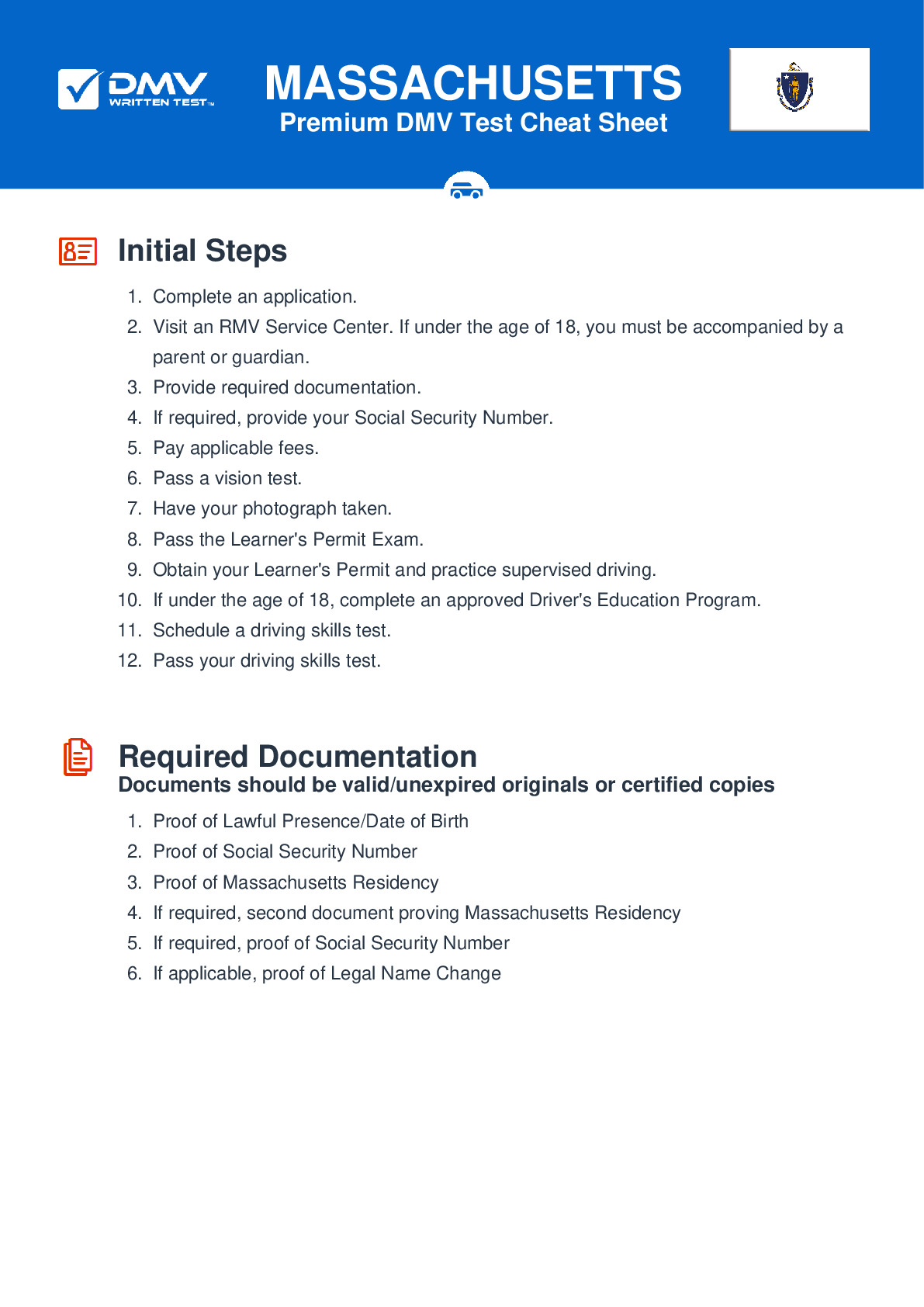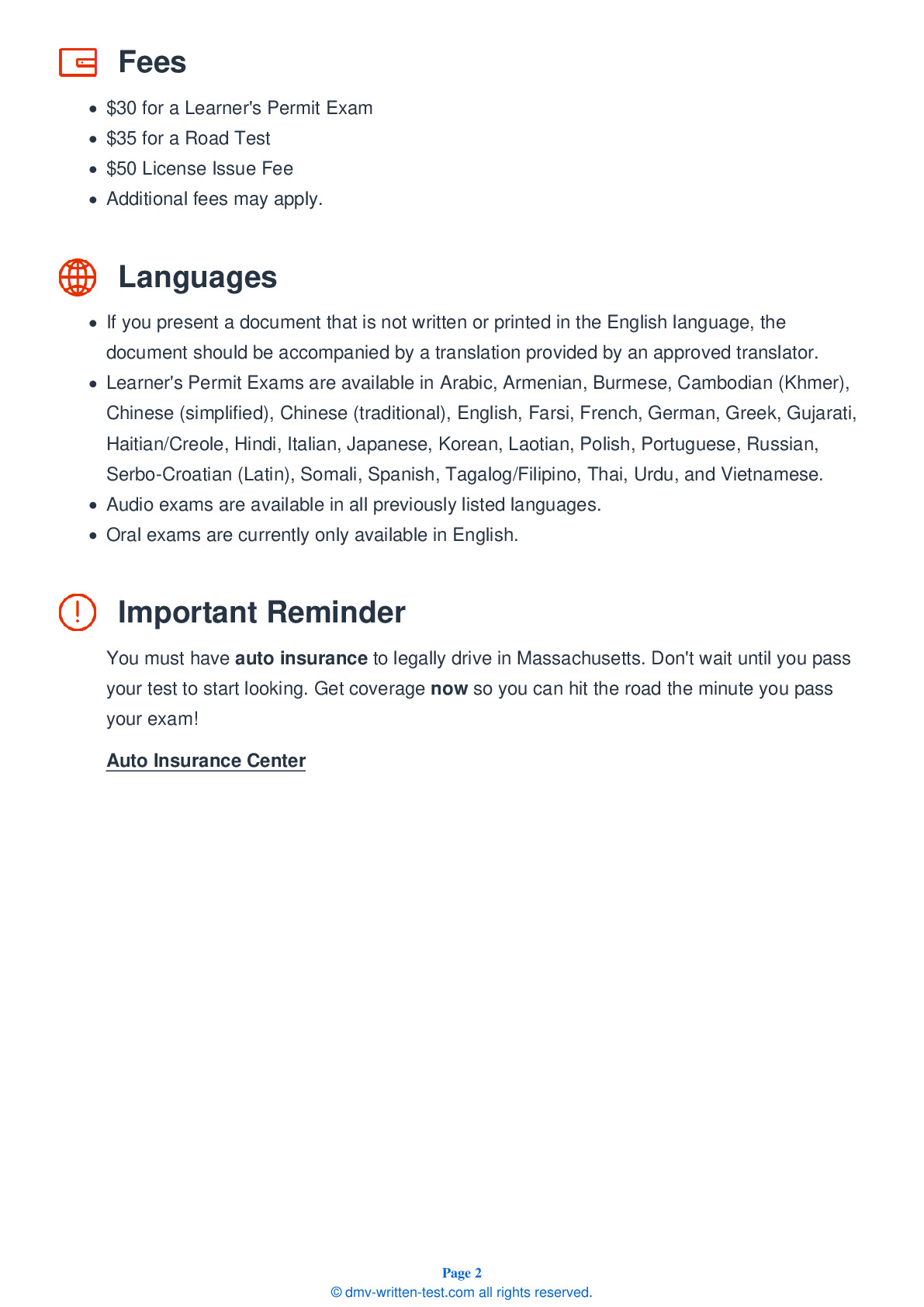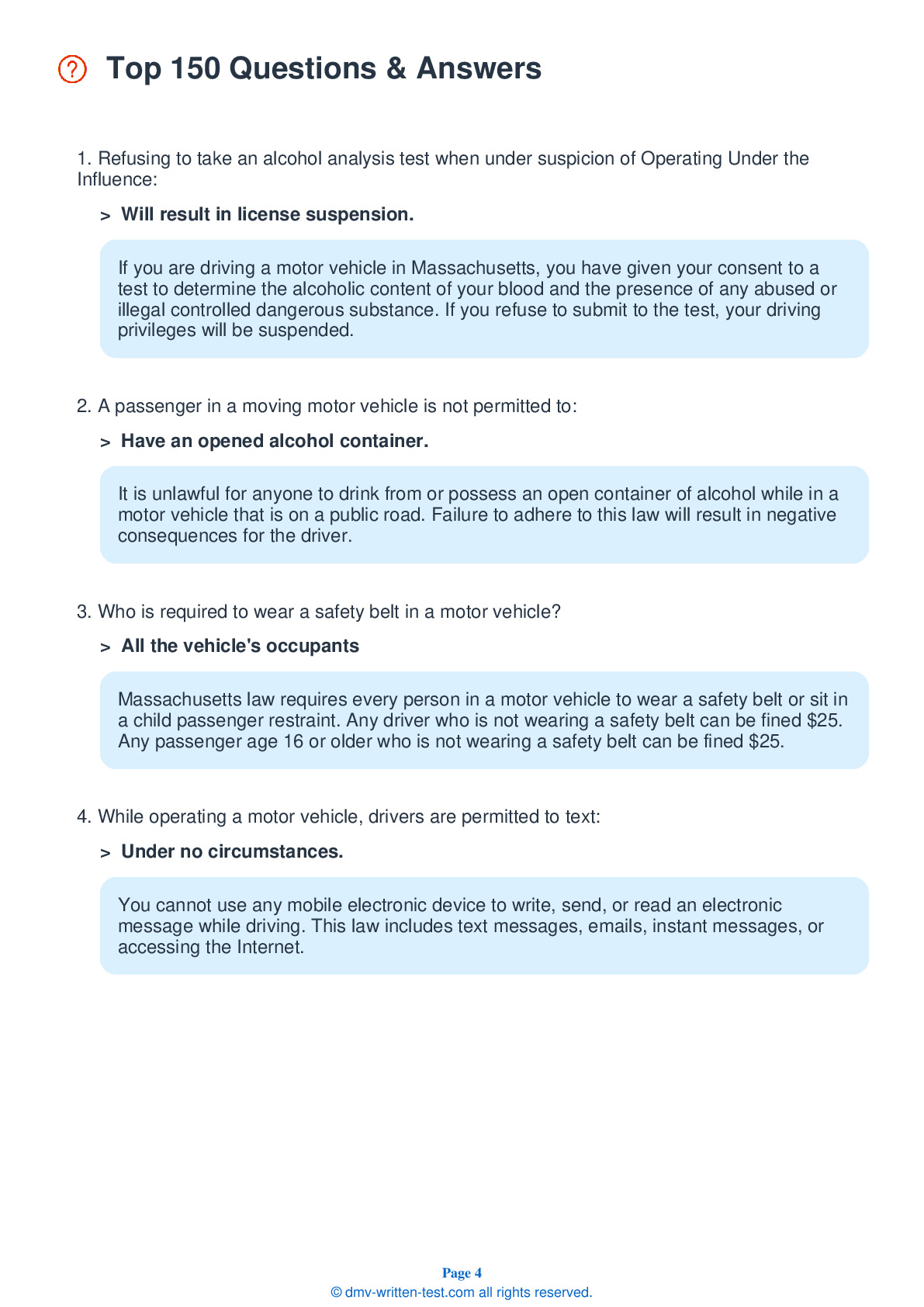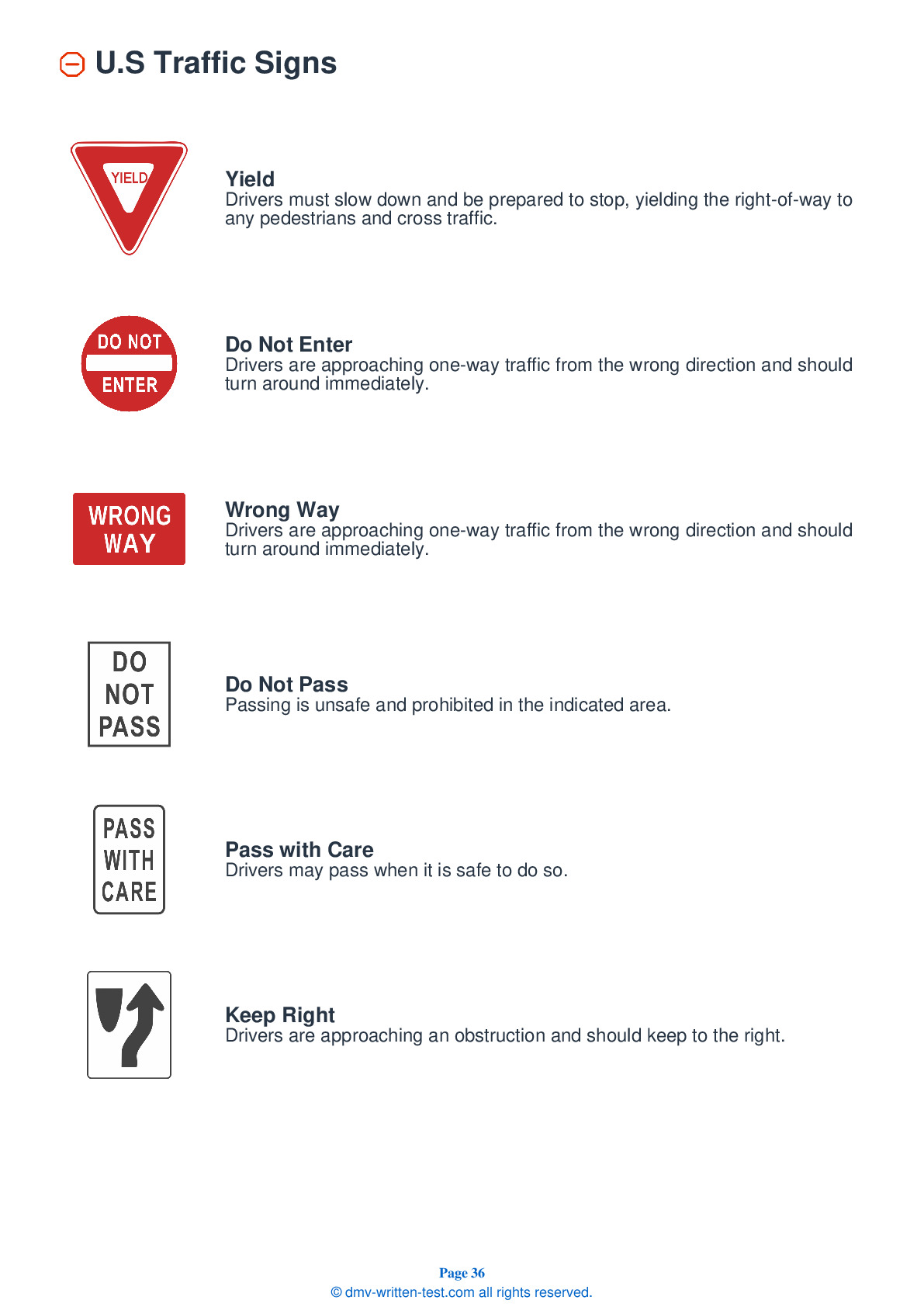2025 Massachusetts Permit Test 3
The following questions are from real DMV written tests. These are some of the actual permit questions you will face in Massachusetts. Each permit practice test question has three answer choices. Select one answer for each question and select "grade this section." You can find this button at the bottom of the drivers license quiz. For a complete list of questions and answers for Massachusetts please visit https://cheat-sheets.dmv-written-test.com/en/massachusetts/car.
Number of Tests
Number of Question
Passing Score
1. Look over your shoulder to check your blind spot when:
Explanation
Look over your shoulder to check your blind spot every time you want to change your vehicle's position. If you are turning, changing lanes, or pulling toward or away from a curb, you should check your blind spots.
2. Traffic signs and pavement markings:
Explanation
Traffic flow is controlled by pavement markings, traffic islands, signals, and signs. These devices inform drivers of conditions on the roadway and help guide drivers safely to their destinations. You must always obey traffic signs, signals, and pavement markings.
3. When approaching a railroad crossing, you should:
Explanation
When you see any signs indicating a nearby railroad crossing, you should slow down, look for a train, and be ready to stop. If the red warning lights are flashing or the gate is down, you must stop 15 to 50 feet before the railroad tracks. Do not try to go around the gate.
4. You are borrowing an unfamiliar vehicle from a friend. You should:
Explanation
When driving an unfamiliar vehicle, take a few minutes before driving to familiarize yourself with the location and operation of the turn signals, hazard warning signals, headlights and beam selector, windshield wipers and washers, brakes, gear selector, and horn. Any defects should be corrected before the vehicle is driven.
5. Which of the following is true regarding seat belts and child restraints in vehicles?
Explanation
Before you drive, always fasten your seat belt and make sure all your passengers are using seat belts or child restraints. Studies have shown that if you use seat belts, your chances of being hurt or killed in a traffic crash are greatly reduced. Children age 12 and under should always ride properly restrained in a rear seat. Never put a rear-facing infant restraint in the front seat of a vehicle with a front passenger airbag.
6. Signaling your intentions before turning, changing lanes, or driving away from a curb:
Explanation




